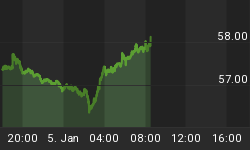The trade war looms large, but it’s not a done deal—yet.
China’s response to Trump’s orders on Thursday to start making a list of Chinese goods to target in a $50-billion tariff punishment has been one of both retaliation and reconciliation, suggesting that this game is far from over.
“China doesn’t hope to be in a trade war, but is not afraid of engaging in one,” the Chinese commerce ministry responded in a statement carried by Reuters. “China hopes the United States will pull back from the brink, make prudent decisions, and avoid dragging bilateral trade relations to a dangerous place.”
Trump, for his part, is buying time to see what China will do, giving his administration 15 days to come up with a list of Chinese products to be targeted in the sweeping tariff package.
Once that list is submitted, there will be a 30-day consultation period, according to Reuters. This is the window in which the trade war can be stopped before it’s started. This is when the real negotiations begin.
It’s a cat-and-mouse game of epic proportions.
What many missed was China’s announcement on Thursday that it would remove or ease barriers to foreign investors in China’s financial sector and unify market entry standards for banks. In other words, they are offering to open up Chinese markets and reform “beyond expectations”.
“Many more measures will be introduced this year and some of the measures will be beyond the expectations of foreign companies and investors,” Consul General Zhang Qiyue said.
And earlier this week, Chinese Premier Li Kequiang told a press conference that China would “fully open up the manufacturing sector, with no mandatory technology transfers allowed, and we will protect intellectual property.”
China appears ready to talk—seriously--and the threat of a trade war might just work to ultimately balance out the U.S-China trade equation. Related: Russian Gold Reserves Hit Record High Amid Rising Tensions With West
But Beijing needs to save face in the meantime, and it has indicated that if Trump goes through with the tariffs unilaterally, soybeans could be the first big victim.
China is the top soybean importer in the world and U.S. agricultural officials estimate that it will import 100 million tons of soybeans in 2018/2019.
China is already threatening to impose up to $3 billion more in tariffs on U.S. imports of fruit and wine as well in response to U.S. steel and aluminum tariffs set to go into effect on Friday, 23 March.
This would hurt fruit growers primarily in California, Florida, Michigan and Washington and wine growers in California.
But it’s a “restrained” response on China’s part.
“With the restrained response, China hopes Trump can realize his errors and mend his ways,” Xu Hongcai, deputy chief economist at the China Centre for International Economic Exchanges, a Beijing think tank, told Reuters.
“If we really want to counter, the strongest response would be to target soybean and automobiles. China is drawing its bow but not firing. We still have some cards to play.”
Washington is waiting to see concrete action and is essentially giving China 45 days to make it happen.
In the meantime, global financial markets—fickle at best—can’t decide if this game is over or just getting started. Wall Street saw a sell-off on Thursday over trade war fears, and Dow futures fell more than 200 points overnight, but started to regain slightly in the pre-market.
But the market responds before it thinks, and this isn’t a trade war yet. The market open looked to regain some of its earlier losses.
By David Craggen for Safehaven.com
More Top Reads From Safehaven.com:
















